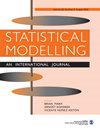评估eGFR作为肾移植排斥反应生物标志物的联合转换模型
IF 1.2
4区 数学
Q2 STATISTICS & PROBABILITY
引用次数: 0
摘要
估计的肾小球滤过率(eGFR)量化了肾移植功能,并在移植后重复测量。通过定期进行活检(eGFR稳定时的方案活检)或由于临床原因进行活检(eGFR下降时的适应症活检)来诊断肾移植排斥反应。eGFR进化作为排斥反应的生物标志物的诊断价值尚未得到很好的证实。为此,我们建立了一个联合模型,该模型结合了过渡模型和共享参数模型的特征,将信息从一个活检转移到下一个活检,并考虑到其间收集的eGFR的纵向信息。根据我们的模型,应用于鲁汶大学医院的数据(870例移植 635次活检),我们得出的结论是,与平均eGFR斜率的负偏差增加了适应症活检中排斥反应的概率,但除活检史外,使用eGFR图谱诊断排斥反应几乎没有好处。从方法上讲,我们的模型通过将频繁(重复)测量的连续结果与不频繁(反复)测量的二元指标联系起来,填补了生物标志物文献中的空白。所开发的联合过渡模型是灵活的,适用于多种其他研究环境。本文章由计算机程序翻译,如有差异,请以英文原文为准。
A joint transition model for evaluating eGFR as biomarker for rejection after kidney transplantation
The estimated glomerular filtration rate (eGFR) quantifies kidney graft function and is measured repeatedly after transplantation. Kidney graft rejection is diagnosed by performing biopsies on a regular basis (protocol biopsies at time of stable eGFR) or by performing biopsies due to clinical cause (indication biopsies at time of declining eGFR). The diagnostic value of the eGFR evolution as biomarker for rejection is not well established. To this end, we built a joint model which combines characteristics of transition models and shared parameter models to carry over information from one biopsy to the next, taking into account the longitudinal information of eGFR collected in between. From our model, applied to data of University Hospitals Leuven (870 transplantations, 2 635 biopsies), we conclude that a negative deviation from the mean eGFR slope increases the probability of rejection in indication biopsies, but that, on top of the biopsy history, there is little benefit in using the eGFR profile for diagnosing rejection. Methodologically, our model fills a gap in the biomarker literature by relating a frequently (repeatedly) measured continuous outcome with a less frequently (repeatedly) measured binary indicator. The developed joint transition model is flexible and applicable to multiple other research settings.
求助全文
通过发布文献求助,成功后即可免费获取论文全文。
去求助
来源期刊

Statistical Modelling
数学-统计学与概率论
CiteScore
2.20
自引率
0.00%
发文量
16
审稿时长
>12 weeks
期刊介绍:
The primary aim of the journal is to publish original and high-quality articles that recognize statistical modelling as the general framework for the application of statistical ideas. Submissions must reflect important developments, extensions, and applications in statistical modelling. The journal also encourages submissions that describe scientifically interesting, complex or novel statistical modelling aspects from a wide diversity of disciplines, and submissions that embrace the diversity of applied statistical modelling.
 求助内容:
求助内容: 应助结果提醒方式:
应助结果提醒方式:


